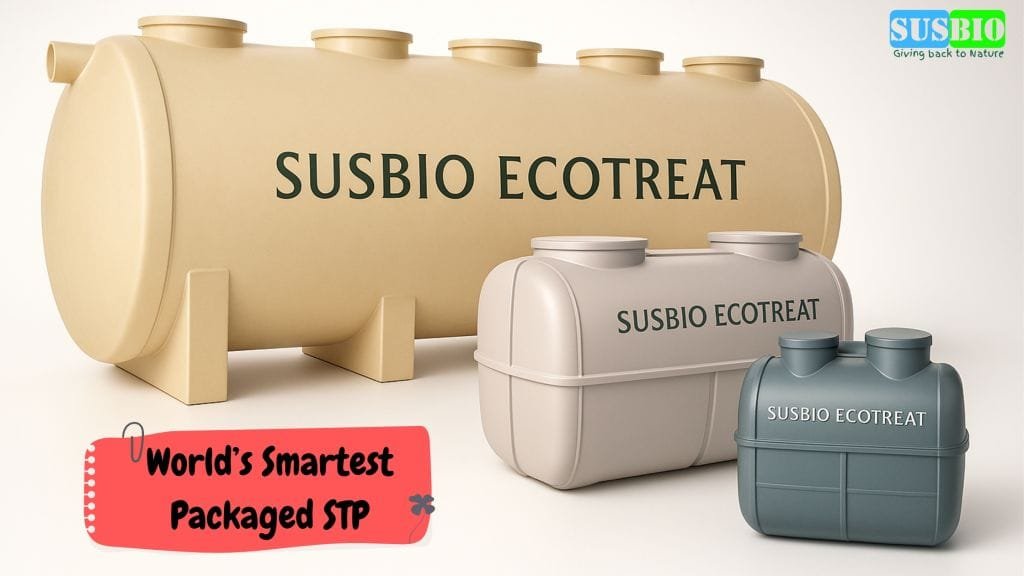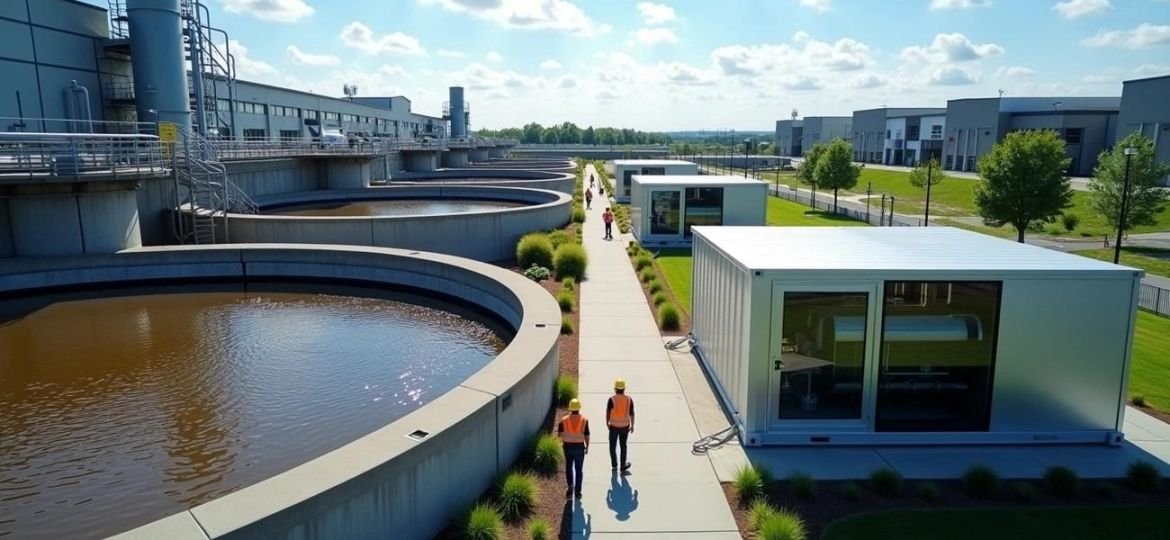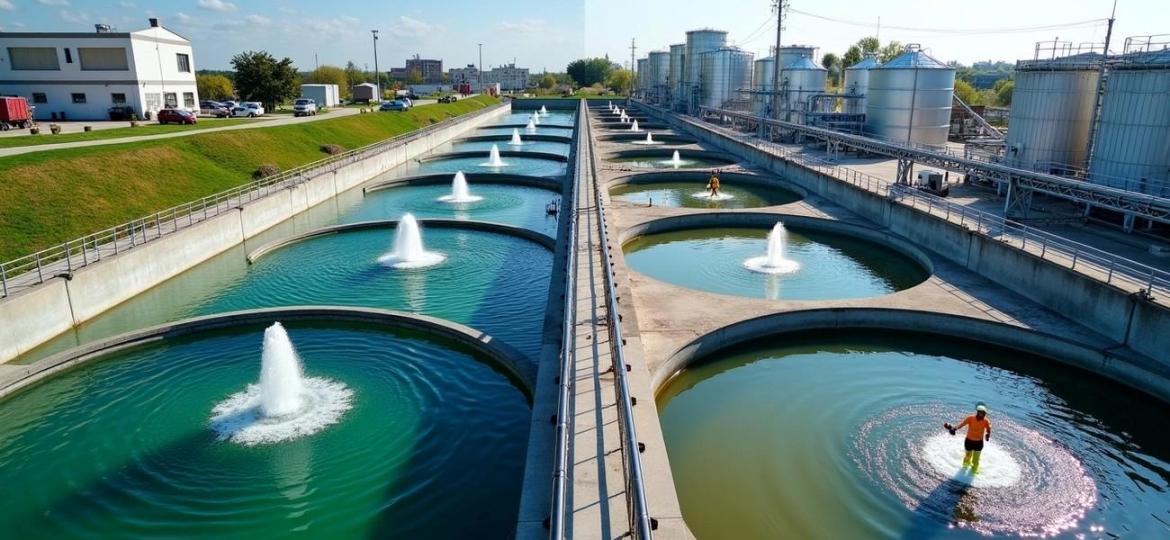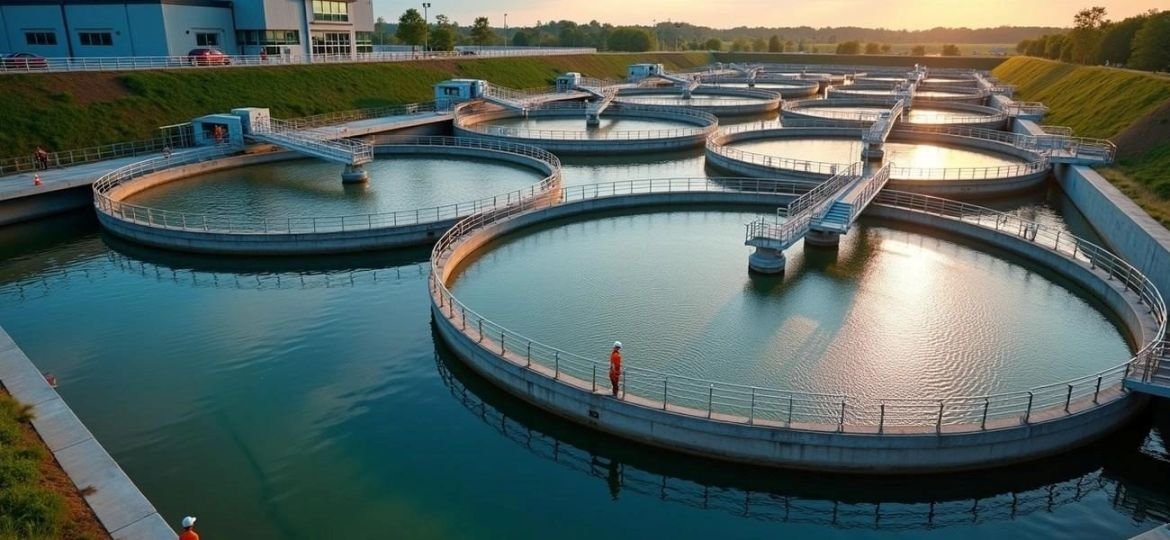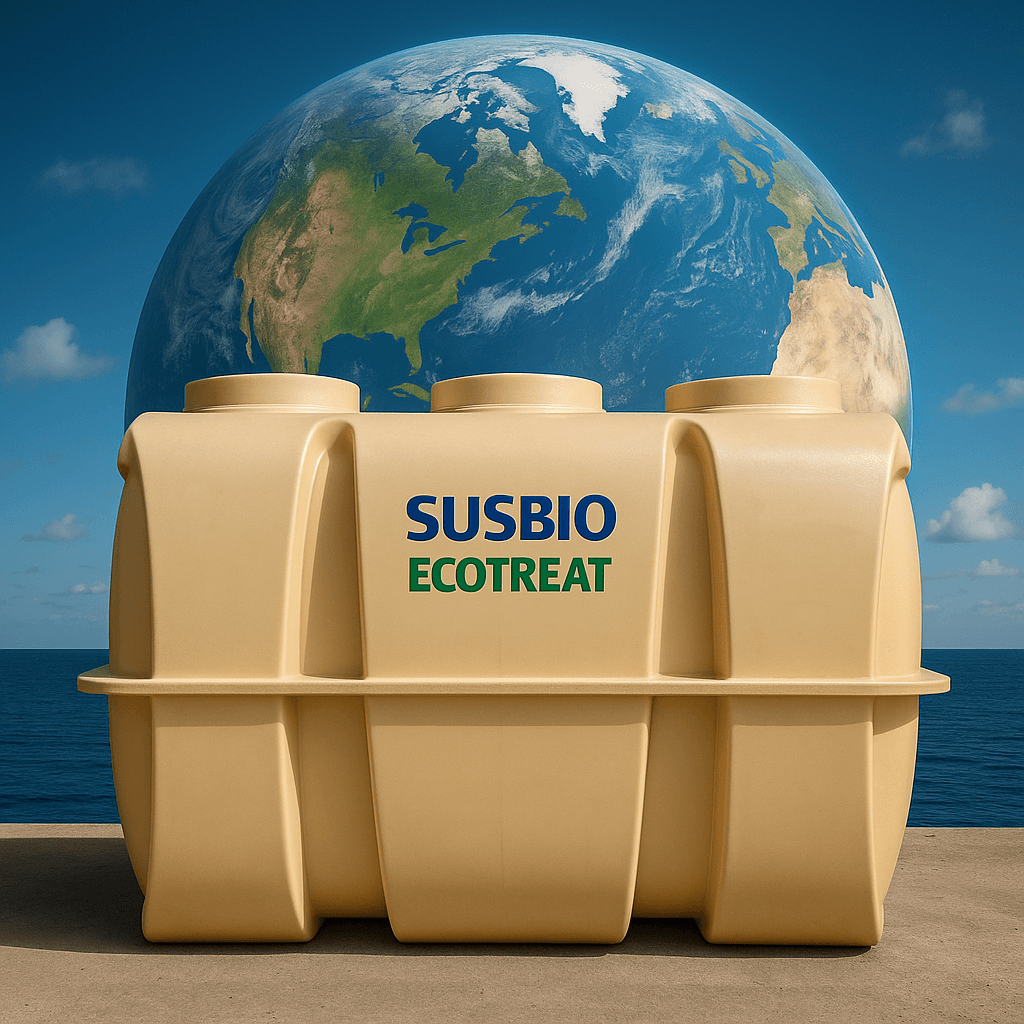A modern STP plant is essential for effective wastewater management in urban environments. The STP full form is Sewage Treatment Plant, a facility designed to remove contaminants from wastewater before it’s released back into the environment. With growing urbanization and stricter environmental regulations, the importance of efficient sewage treatment has never been more critical.
Understanding what is STP plant design involves knowledge of hydraulics, biology, and environmental engineering. These facilities serve as the frontline defense against water pollution, protecting our rivers, lakes, and oceans from harmful contaminants while enabling water reuse opportunities that are increasingly valuable in water-scarce regions.
A sewage treatment plant converts wastewater into an effluent that can be returned to the water cycle with minimal environmental impact. Without proper treatment, raw sewage releases pathogens, excess nutrients, and toxic compounds that devastate aquatic ecosystems and pose serious public health risks.
STP Plant Process: Understanding the Treatment Stages
The STP plant process typically involves three main stages: primary, secondary, and tertiary treatment. Each stage plays a crucial role in progressively removing contaminants from wastewater.
Key Stages in the Sewage Treatment Plant Process
Primary Treatment: This initial stage focuses on physical separation through sedimentation. Large screens first remove debris and solid materials. Then, in primary settling tanks, gravity separates heavier solids from the water. This process removes approximately 60% of suspended solids and 30% of Biochemical Oxygen Demand (BOD).
Secondary Treatment: The heart of the sewage treatment plant process, this stage employs biological decomposition using microorganisms to break down dissolved organic matter. Aeration tanks provide oxygen to support aerobic bacteria that consume organic pollutants. Secondary clarifiers then separate the biological mass (activated sludge) from the treated water. This stage can reduce BOD by up to 90%.
Tertiary Treatment: The final polishing stage involves advanced filtration and disinfection methods. Sand filters, membrane filtration, or activated carbon may be used to remove remaining suspended particles. Disinfection through chlorination, UV radiation, or ozonation eliminates pathogens. This stage produces high-quality effluent suitable for discharge or reuse.
Optimizing the STP plant process can significantly reduce operational costs while improving treatment efficiency. Modern plants increasingly incorporate nutrient removal processes to address nitrogen and phosphorus, which can cause eutrophication in receiving water bodies.
How STP Plant Works: A Technical Breakdown
Understanding how STP plant works requires knowledge of both biological and physical treatment processes. The treatment begins when raw sewage enters the plant through an inlet chamber where flow measurement occurs. Initial screening removes large objects that could damage equipment or interfere with treatment processes.
After screening, the wastewater flows to grit chambers where sand, gravel, and other heavy inorganic materials settle out. This protects downstream equipment from abrasion and prevents accumulation in process tanks.
In the primary clarifiers, the flow velocity slows significantly, allowing suspended solids to settle by gravity. Mechanical scrapers collect the settled primary sludge for further processing, while oils and greases rise to the surface where they’re skimmed off.
The secondary biological treatment employs microorganisms to consume dissolved organic matter. In conventional activated sludge systems, aeration tanks bubble air through the wastewater to support aerobic bacteria. These microorganisms form flocs that adsorb and metabolize organic pollutants. Alternative biological processes include trickling filters, rotating biological contactors, and various attached growth systems.
Secondary clarifiers separate the biological flocs from the treated water. A portion of this settled biomass (return activated sludge) recycles back to the aeration tanks to maintain the microbial population, while excess sludge requires further treatment and disposal.
Tertiary treatment may include filtration through sand, anthracite, or membrane systems to remove remaining suspended solids. Chemical precipitation can remove phosphorus, while biological or chemical processes address nitrogen compounds. Final disinfection ensures the effluent is safe for discharge.
This diagram illustrates how STP plant works from initial screening to final disinfection stages:

STP Plant Diagram: Visual Guide to Treatment Components

The STP plant diagram below shows the complete treatment flow from influent to effluent discharge:
Referring to an STP plant diagram helps engineers and operators understand the relationship between different treatment components. The diagram illustrates how wastewater flows sequentially through various treatment units, with each component designed to remove specific contaminants.
Key components visible in the diagram include:
- Inlet Works: Screening and grit removal
- Primary Clarifiers: Sedimentation tanks for solid separation
- Aeration Basins: Biological treatment zones
- Secondary Clarifiers: Biomass separation tanks
- Tertiary Treatment Units: Advanced filtration systems
- Disinfection Contact Chamber: Pathogen elimination zone
- Sludge Treatment Facilities: Digestion and dewatering units
The STP plant components include screens, grit chambers, aeration tanks, clarifiers, and disinfection systems. Each component serves a specific function in the treatment train, working together to progressively improve water quality.
Types of STP Plant Technologies in Modern Wastewater Treatment
There are several types of STP plant technologies available today, including MBBR, SBR, MBR, and conventional activated sludge systems. Each technology offers distinct advantages for specific applications.
Conventional Activated Sludge (CAS): The traditional workhorse of sewage treatment, CAS systems use suspended microorganisms in aeration tanks followed by clarifiers for solid-liquid separation. While proven and reliable, these systems require significant space and may struggle with fluctuating loads.
Moving Bed Biofilm Reactor (MBBR): This technology employs plastic carriers that provide surface area for biofilm growth. The attached microorganisms treat wastewater as it flows through the reactor. MBBR systems offer higher treatment capacity in smaller footprints and better resilience to load variations.
Sequencing Batch Reactor (SBR): SBR systems perform all treatment processes in a single tank through time-sequenced phases. This eliminates the need for separate clarifiers and offers operational flexibility. SBRs work well for smaller communities and variable flow conditions.
Membrane Bioreactor (MBR): Combining biological treatment with membrane filtration, MBR systems produce exceptionally high-quality effluent. The membranes replace conventional clarifiers, allowing higher biomass concentrations and smaller footprints. While offering superior performance, MBRs typically have higher energy and maintenance requirements.
Extended Aeration: A modification of the activated sludge process, extended aeration uses longer retention times to achieve high treatment efficiency with simplified operation. These systems work well for smaller communities but require larger tanks.
Choosing between different types of STP plant technologies depends on specific project requirements and constraints including available space, treatment objectives, energy availability, operator expertise, and budget considerations.
Sewage Treatment Plant Evolution and Modern Approaches
The concept of sewage treatment has evolved dramatically over centuries. Early civilizations recognized the need to separate waste from living areas, but formal treatment began only in the late 19th century with simple sedimentation and land application systems.
The activated sludge process, developed in the early 20th century, revolutionized sewage treatment by harnessing microbial activity to remove organic pollutants. This biological approach remains the foundation of most modern treatment systems, though with significant technological enhancements.
Today’s sewage treatment plant designs incorporate advanced process control, energy efficiency measures, and resource recovery capabilities. The industry has shifted from viewing sewage as waste to recognizing it as a resource containing water, nutrients, and energy that can be recovered and reused.
The design of a sewage treatment plant must account for both current needs and future capacity requirements. Modern facilities increasingly incorporate flexibility to adapt to changing regulations, population growth, and climate change impacts.
Digital technologies now play a crucial role in plant operation, with SCADA systems, online analyzers, and predictive maintenance tools optimizing performance while reducing operational costs. The integration of artificial intelligence and machine learning represents the next frontier in treatment plant optimization.
SUSBIO: Leading STP Plant Manufacturer in India
As a leading STP plant manufacturer, SUSBIO has developed innovative solutions like SUSBIO ECOTREAT to address modern treatment challenges. With years of experience in the wastewater treatment industry, SUSBIO has established itself as a pioneer in sustainable, efficient treatment technologies.
When selecting an STP plant manufacturer, consider their experience, technology offerings, and after-sales support. SUSBIO stands out for its commitment to innovation, quality, and customer satisfaction, with a proven track record of successful installations across diverse applications.
SUSBIO ECOTREAT represents the next generation of STP plant technology with its innovative dual treatment approach. This advanced system combines the best aspects of different treatment technologies to deliver superior performance with minimal footprint and energy requirements.
SUSBIO ECOTREAT: Revolutionary STP Technology
SUSBIO ECOTREAT is a compact, prefabricated sewage treatment solution that combines dual biological and physical treatment processes. Unlike conventional systems that require extensive civil works and months of construction, ECOTREAT units can be installed in weeks, significantly reducing project timelines and costs.
The system employs a unique combination of anaerobic and aerobic processes, optimizing treatment efficiency while minimizing energy consumption. This dual approach achieves up to 90% energy reduction compared to traditional systems, translating to substantial operational cost savings over the facility’s lifetime.
SUSBIO ECOTREAT integrates all essential STP plant components into a compact, prefabricated unit. The modular design allows for easy expansion as treatment needs grow, eliminating the need for major reconstruction or retrofitting. This scalability makes ECOTREAT ideal for developments with phased implementation plans.
Maximizing STP Plant Efficiency with SUSBIO ECOTREAT
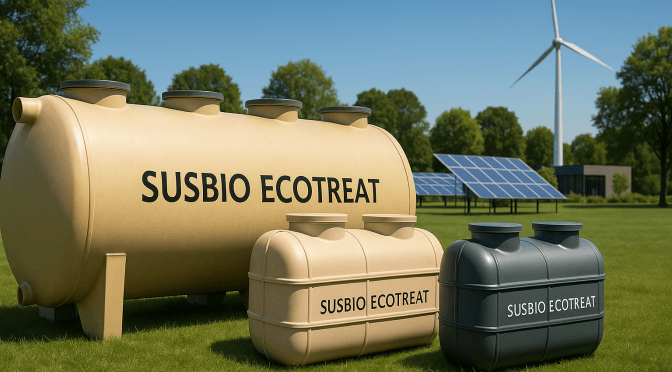
Selecting the right STP plant depends on factors like capacity requirements, space constraints, and budget considerations. SUSBIO ECOTREAT addresses these concerns through its innovative design and operational features.
The system’s minimal human intervention requirement reduces operational complexity and labor costs. Advanced automation and control systems monitor performance parameters and adjust operations accordingly, ensuring optimal treatment under varying conditions.
SUSBIO ECOTREAT’s zero discharge model implementation supports water conservation goals by producing high-quality effluent suitable for reuse in applications like landscape irrigation, toilet flushing, and cooling systems. This closed-loop approach reduces freshwater demand while eliminating discharge concerns.
The advanced filtration processes employed in SUSBIO ECOTREAT systems ensure consistent effluent quality that meets or exceeds regulatory standards. This reliability is crucial for facilities where compliance is non-negotiable and environmental protection is a priority.
Regular STP Plant Maintenance Requirements
Even the most advanced STP plant requires regular maintenance to ensure optimal performance. SUSBIO ECOTREAT’s design minimizes maintenance needs through robust components and simplified processes, but routine attention remains important.
Typical maintenance activities include:
- Regular inspection of mechanical equipment
- Monitoring of treatment parameters
- Periodic cleaning of screens and filters
- Sludge management and disposal
- Calibration of sensors and control systems
SUSBIO provides comprehensive maintenance support, including scheduled service visits, operator training, and emergency assistance. This support ensures that ECOTREAT systems maintain peak performance throughout their operational life.
Current STP Plant Regulations and Compliance Standards
The regulatory landscape for wastewater treatment continues to evolve, with increasingly stringent standards for effluent quality and environmental protection. In India, the Central Pollution Control Board (CPCB) and State Pollution Control Boards establish and enforce treatment requirements.
Recent regulatory updates include ambitious reuse targets: 20% by 2027-28 and 50% by 2030-31. These targets reflect the growing recognition of treated wastewater as a valuable resource rather than a waste product. SUSBIO ECOTREAT’s high-quality effluent makes it ideal for meeting these reuse objectives.
Extended User Responsibility has become mandatory for bulk water consumers, requiring them to implement treatment and reuse systems. This regulatory approach places greater responsibility on large water users to manage their environmental impact.
Regular monitoring and reporting to State Pollution Control Boards is required for all treatment facilities. SUSBIO ECOTREAT’s automated monitoring capabilities simplify compliance reporting, reducing administrative burden while ensuring accurate documentation.
SUSBIO ensures that all ECOTREAT installations comply with current regulations and can be easily upgraded to meet future requirements. This forward-looking approach protects clients’ investments and provides peace of mind regarding regulatory compliance.
Environmental Benefits of Advanced STP Plants
Beyond regulatory compliance, modern STP plants deliver significant environmental benefits. SUSBIO ECOTREAT exemplifies this through its resource-efficient design and operation.
Water conservation is perhaps the most obvious benefit, with treated effluent providing a reliable alternative to freshwater for non-potable applications. This reduces pressure on strained water resources and supports sustainable water management.
Energy efficiency represents another crucial environmental advantage. ECOTREAT’s innovative design reduces energy consumption by up to 90% compared to conventional systems, directly translating to reduced carbon emissions and lower operational costs.
Minimized sludge production addresses one of the most challenging aspects of wastewater treatment. ECOTREAT’s efficient biological processes reduce excess sludge generation, simplifying disposal and reducing associated environmental impacts.
The compact footprint of ECOTREAT systems minimizes land requirements, preserving valuable space for other uses. This is particularly important in urban areas where land availability is limited and expensive.
Conclusion: The Future of STP Plant Technology
The wastewater treatment industry continues to evolve, with emerging technologies promising even greater efficiency and sustainability. SUSBIO remains at the forefront of this evolution, continuously refining the ECOTREAT system to incorporate the latest innovations.
AI integration represents a significant trend, with predictive maintenance and process optimization algorithms enhancing performance while reducing operational costs. Current AI adoption in wastewater treatment plants stands at 10-15% in larger utilities but is expected to reach 25-30% by 2025.
IoT implementation enables real-time monitoring and data analytics, providing unprecedented visibility into system performance. This connectivity supports proactive management and optimization of treatment processes.
The trend toward decentralized systems aligns perfectly with SUSBIO ECOTREAT’s modular design. These location-specific solutions reduce infrastructure requirements while enabling tailored approaches to local treatment challenges.
As water scarcity concerns grow and environmental regulations tighten, the importance of advanced STP plant technologies will only increase. SUSBIO ECOTREAT represents not just current best practice but a glimpse into the future of sustainable wastewater management.
For more information about SUSBIO ECOTREAT and how it can address your specific sewage treatment needs, contact our technical team today. Our experts will provide a detailed assessment and customized solution to ensure optimal performance, regulatory compliance, and environmental protection.
Frequently Asked Questions
1. What is an STP plant and why is it important?
An STP plant (Sewage Treatment Plant) is a facility designed to treat wastewater and remove harmful contaminants before releasing it into the environment or reusing it for non-potable purposes. It is crucial for preventing water pollution, protecting public health, and ensuring sustainable water management.
2. How does an STP plant work?
An STP plant works through a multi-stage process—primary treatment (physical separation), secondary treatment (biological decomposition), and tertiary treatment (advanced filtration and disinfection). These stages progressively remove solids, organic matter, and pathogens, producing treated water suitable for discharge or reuse.
3. What are the main types of STP plant technologies?
The most common STP plant technologies include Conventional Activated Sludge (CAS), Moving Bed Biofilm Reactor (MBBR), Sequencing Batch Reactor (SBR), and Membrane Bioreactor (MBR). Each has unique advantages in terms of space, energy efficiency, and effluent quality.
4. What is the cost of installing and maintaining an STP plant?
The cost depends on factors like capacity, technology type, automation level, and site conditions. While initial installation can be significant, modern solutions like SUSBIO ECOTREAT reduce operating costs through energy efficiency, modular design, and minimal maintenance requirements.
5. Is it mandatory to have an STP plant in India?
Yes, as per CPCB guidelines and State Pollution Control Boards, STP plants are mandatory for apartments, commercial complexes, industries, and institutions generating large volumes of sewage. Non-compliance can lead to heavy penalties and operational restrictions.


